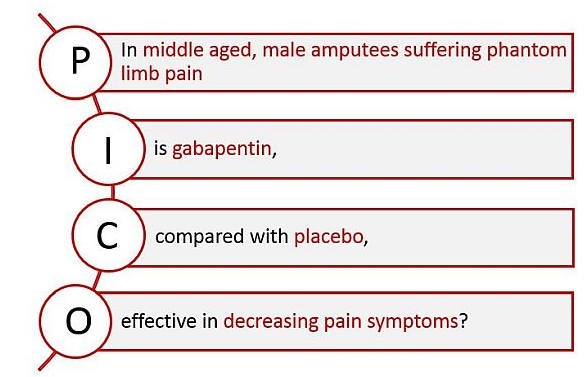Evidence Based Practice (EBP)
PICO/PEO Questions
An important step in an evidence-based practice process is formulating an answerable question. This forms the foundation for quality evaluation and searching. A well-formulated question will facilitate the search for evidence and will assist you in determining whether the evidence is relevant to your question. The PICO process is a technique used in evidence based practice (EBP) to frame and answer a clinical or health related question.
PICO stands for:
- Problem that you want to investigate
- Population/patients of interest
- Intervention you would like to investigate
- Comparison with another intervention (or no intervention - this category is optional)
- Outcome that is likely or that is desired, and how it will be measured
Additional categories are sometimes included: Type of study (which we’ll cover more on the next page), Timing (how long should the treatment last or are you investigating a certain time period such as preoperative?), Type of question (therapy, diagnosis, prevention, or other?), or Setting (hospital, ICU).
Here is an example of putting PICO in action with
- P: in middle aged, male amputees suffering phantom limb pain
- I: is gabapentin,
- C: compared with placebo,
- O: effective in decreasing pain symptoms?

From Murdoch University, Systematic Reviews guide
PEO is another framework that is especially useful when investigating a prognosis or likelihood of developing a certain condition as a result of a pre-existing condition or exposure.
PEO stands for:
- Population/Patient: how would you describe the patient or population of interest?
- Exposure: what pre-existing conditions does the patient/population have or what has the patient/population been exposed to?
- Outcome: the outcome of interest; unlike in PICO, the outcome is almost always used in the search terms with the PEO framework.
PEO framework information taken from the University of Colorado’s Libraries PICO/PEO libguide.
Quick Check: